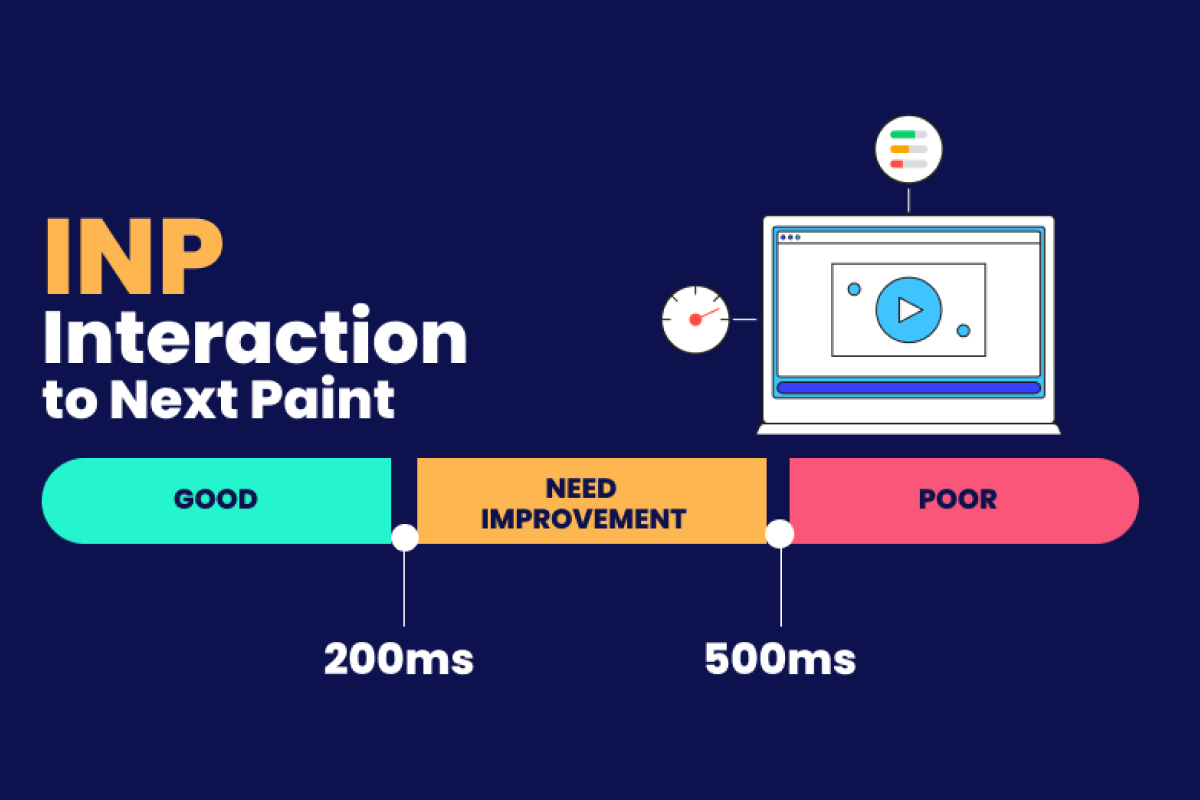Core Web Vitals with INP Integration: Google's Game-Changing Move Set for March 12

In the dynamic realm of web development, staying abreast of the latest updates is imperative for maintaining optimal user experiences. Recently, Google announced a pivotal change in its Core Web Vitals program, introducing Interaction to Next Paint (INP) as a replacement for the longstanding First Input Delay (FID) metric.
This evolution signifies a concerted effort by Google to address the limitations of FID and enhance the assessment of interactivity on the web. In this blog, we delve into the details of this transition, its implications for web developers, and the strategic measures they can take to adapt successfully.
The Journey from FID to INP
First Input Delay (FID), introduced in 2018 as part of Google's Web Vitals initiative, measured the time to first paint after a user's initial interaction. However, as the digital landscape evolved, it became evident that FID had certain limitations in gauging interactivity comprehensively. Recognizing this need for improvement, the Chrome team introduced Interaction to Next Paint (INP) as an experimental metric in May 2022.
INP focuses on measuring the time from a user's interaction with a page, such as clicking a button, to when the browser renders the changed pixels on the screen. This refined metric aims to capture nuances of interactivity that FID could not address effectively.
The INP Takeover
Google has officially declared that INP will replace FID as a Core Web Vital on March 12 of this year. This transition means that FID will no longer hold its status as a Core Web Vital and will be deprecated, leading to changes in documentation and tools.
As a result, expect changes in FID documentation. While historically significant FID documentation will be retained, clear notices will emphasize FID's deprecated status and direct to INP documentation. Some FID-centric documentation might be eliminated, redirecting users to relevant INP documentation.
Developers should be prepared for the removal of FID from Google Search Console immediately upon INP's integration as a Core Web Vital. Other tools, such as Page Speed Insights and CrUX, will provide a six-month deprecation period, affording developers time to update their code and adapt to the new metric.
Preparing for the Transition
As the INP change approaches, developers are advised to assess their website's INP performance against the "good" threshold, reflecting performance at the 75th percentile of page loads. For those falling short of this threshold, Google recommends the following steps to optimize for the transition:
-
Evaluate current INP performance using tools like Page Speed Insights and Chrome's User Experience Report.
-
Diagnose issues affecting INP, such as long JavaScript tasks, excessive main thread activity, or a large DOM.
-
Optimize problematic areas by following Google's optimization guides. This may involve streamlining JavaScript, reducing input delay, simplifying the DOM structure, or refining CSS selectors.
Ramifications for Web Development
The introduction of INP as a Core Web Vital has broader consequences for web development, influencing practices, rankings, and user engagement:
SEO Impact: INP scores may play a pivotal role in determining websites' search engine rankings and user engagement. As Google incorporates Core Web Vitals into its ranking algorithm, developers must prioritize optimizing for INP to maintain or improve their positions in search results.
Evolution of Web Development Practices: With INP focusing on interaction readiness, web development practices are likely to evolve. Developers may need to make adjustments to application architecture and code to ensure optimal interactivity, reflecting a paradigm shift in the development landscape.
Performance Monitoring Tools: Existing performance monitoring tools and strategies may need updates to effectively track and analyze the new INP metric. Developers should stay vigilant for updates to their preferred tools or explore new ones that accommodate this evolving metric.
The Road Ahead
The inclusion of INP in Core Web Vitals marks a well-thought-out progression over the past two years. It represents a significant step forward in assessing and improving the responsiveness of the web. Developers should embrace this change and take advantage of the time leading up to March 12 to understand and optimize their INP performance. Google's meticulous planning indicates a commitment to fostering a more responsive web, and developers should align their strategies with this vision.
Conclusion
As Google prepares to transition to the INP metric on March 12, web developers find themselves at a crucial juncture. Evaluating their site's performance against the new metric's standards and taking proactive steps to optimize areas impacting interactivity is essential.
With interactivity gaining prominence in search rankings and user engagement, developers should seize this opportunity to adapt their practices. The shift from FID to INP signifies a commitment to a more responsive web, and developers who embrace and prepare for this change will undoubtedly navigate with success.
By understanding the nuances of INP and proactively optimizing for it, developers can ensure their websites are primed for success in an increasingly competitive digital landscape.









